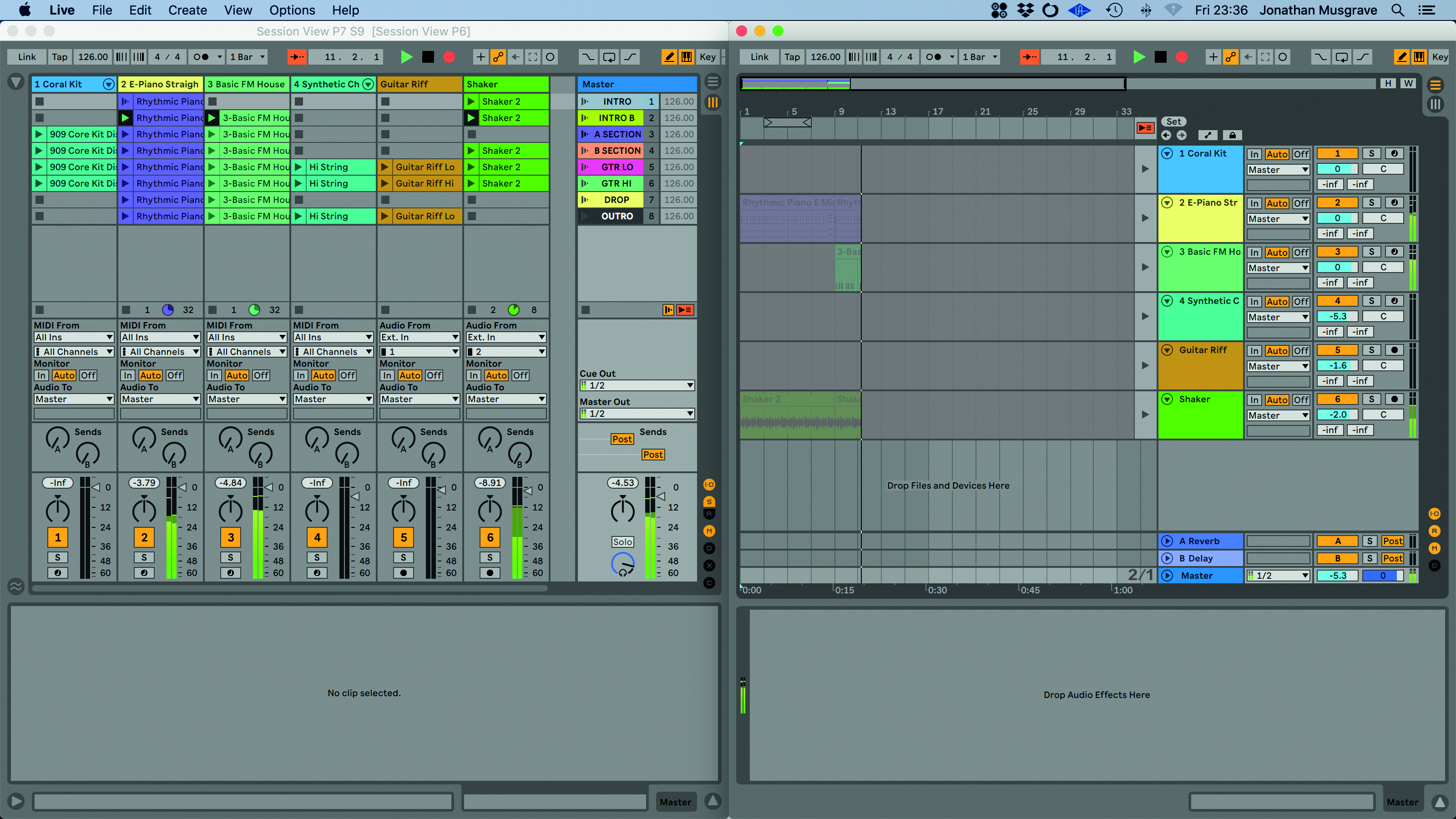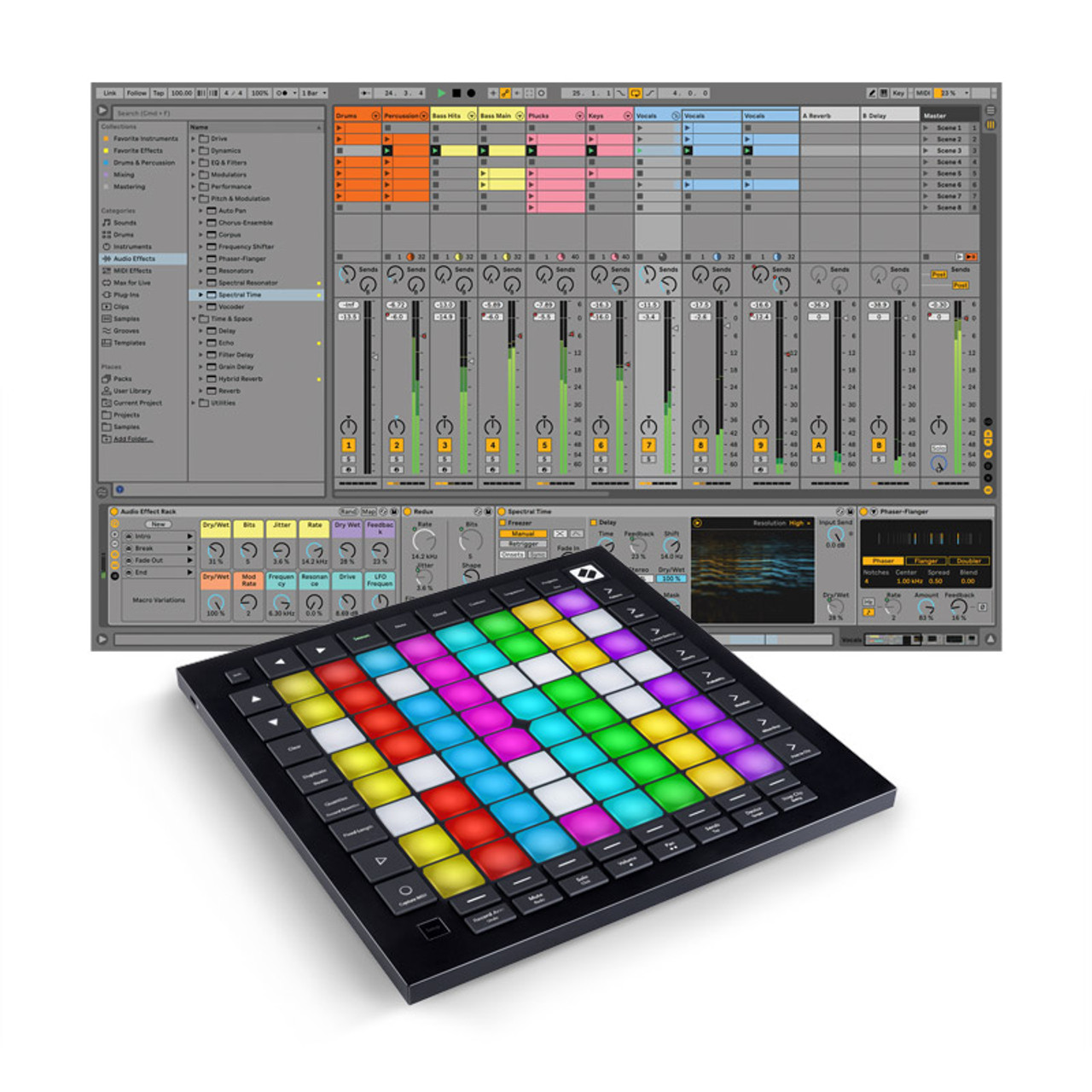
- #Using ableton live lite 8 how to
- #Using ableton live lite 8 Patch
- #Using ableton live lite 8 software
- #Using ableton live lite 8 series
There are fade points at the ends of each clip, but there’s more in this suite. Smoother, Improved Editing with Ableton Live Suite.īy taking a closer look at the editing aspects of Ableton Live, manipulation of audio clips is now more immediate and straightforward.

Thus, in one stroke, the fade option in each audio track has disappeared from the automation mode. In the case of audio clips and with the track enlarged, drag points appear to create cross-fades between clips. And there we see that the clips have a flatter and more minimalist look, being highlighted when you select them. The most noticeable visual improvement affects the view of arrangements. Without abandoning its minimalist and sharp look, the browser icons are more eye-catching and the transport controls (record, play) display a slightly larger size.

#Using ableton live lite 8 software
The Berlin company has earned its popularity among the great DAW software because of how simple and satisfying it is to produce a song, create beats, or improvise in a live session -among many other actions that you surely know.īeing a software that has been with us for several years now, what can we expect in the new version of Ableton Live Suite? One of the best attributes of Ableton Live Suite, which improves version after version, is the speed and flexibility with which it allows you to capture a musical idea in just a few minutes or seconds. Always in favor of immediacy and a fluid working method, Ableton Live Suite brings new tools, as well as improving other known ones. (One should hope so, right?) Hope this helps.Ableton Live Suite, the popular digital audio workstation, is back, and is better, much better. They each have their advantages but basically USING LOOPER IS WAY EASIER than setting up Bome's. However, Bome's site has an tut Looper does stuff the old way can't, so too are there things one can do with Bome's that Looper just can't, too.
#Using ableton live lite 8 how to
Ableton used to link to a tutorial on how to do it (how often do you see Ableton referencing any third-party software?) but they went ahead and made Looper which does some CRAZY stuff the Kid Beyond way couldn't (without Max, at least :) ) so they likely don't have the link anymore.
#Using ableton live lite 8 Patch
The way Kid Beyond does it is utilizing another program called Bome's Midi Translator Pro (Midi OX is a similar prog, but Bome's is rather unique) which is kind-of like a virtual midi patch bay but FAR more. The Kid Beyond video is mentioned above- he most assuredly was not using looper as the video was made before Ableton HAD looper and is much of the reason they MADE looper. I'm not sure if it was in 7 or not, but def. How to do it depends on what version of Ableton you're using more specifically if it includes the "Looper" effect from Ableton. At the end of the day - whatever works for you right? This is why he has to pause for a bar after each recording before arming the next track. It looks like he just has each pedal keyed to the record / play button for the same scene across different tracks. He's got a 1-bar control sync on so he doesn't have to be 100% precise with his foot pedal punch-in/punch-out.
#Using ableton live lite 8 series
I just looked at the Kid Beyond video and I don't think he's using Looper - it looks like he's arming a series of different tracks, all of which he's routed his mic input to. The challenge for me has always been seamlessly looping, overdubbing, and riffing in real-time and since I'm a keyboardist using both hands, the footpedal was the only way to go.

Looper is great for looping live audio, but is a little redundant for recording MIDI loops in realtime - since the built-in ableton live controls are a little more flexible. By mapping Start, stop, undo, delete and next track to your foot switches, you can easily perform your loop in realtime, get it right, and then advance to the next scene or track when you want to record the next variation. I find that the best way to do it is with some kind of foot pedal switch, like the FC-50.


 0 kommentar(er)
0 kommentar(er)
